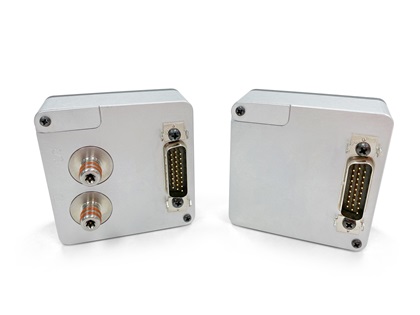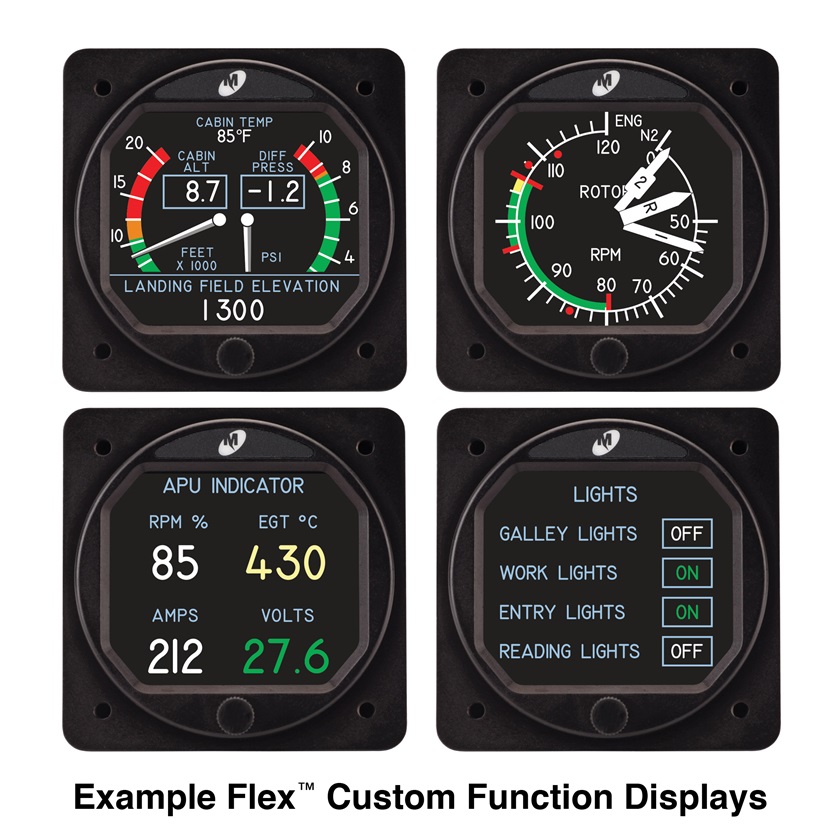One instrument, many possible faces
Mid-Continent produces customizable display
The new Flex Custom Function Display from Mid-Continent Instruments and Avionics is not just a single instrument: It is a digital canvas (with a built-in data converter and controller) that can become one (or more) of many displays fit for a standard panel cutout.
The Wichita, Kansas, company billed the new Flex MD23 Series as a “first-of-its-kind” Custom Function Display in a February 22 product announcement, noting the CFD is not to be confused with a multifunction display. The Flex is designed to be customized for factory installation or retrofit, enabling a huge range of installation options, rather than being preprogrammed to serve particular functions, as MFDs generally are.
The hardware and software are certified via multiple technical standard order approvals and the unit, which fits in a standard 2-inch cutout, also meets the RTCA Inc. standards for avionics software (specifically, RTCA DO-178C, Design Assurance Level A), the company said.

The Flex MD23 accepts a broad range of standard data inputs, including ARINC 429, RS-232, analog, absolute and differential pressure (direct pitot-static inputs are optional), and temperature. That means it can be programmed to display just about anything, and serve as almost any instrument, ranging from a basic annunciator (landing gear, master caution) to sophisticated instruments such as a radar altimeter display, angle of attack indicator, altimeter, or airspeed indicator, to name just a few of the “virtually limitless” options. It has a daylight-readable, high-definition LCD display and a push-and-turn control knob. A USB interface allows software updates in the field.
Mid-Continent Director of Communications Julie Lowrance said in an email exchange that pricing is highly dependent on configuration. The hardware, including base software, will range between $2,000 and $4,000, though a Custom Instrument Definition file is also required to fully implement an installation, and that can cost a great deal more, “from $12,000 to six figures, depending on the complexity of the instrument,” Lowrance wrote. The Flex can even serve as multiple instruments in one, depending on wiring requirements and other installation details. The company does not plan to market the device directly to pilots or individual aircraft owners, at least not initially. Instead, the company expects to sell the Flex to aircraft makers or avionics installers who can work with the company’s engineers to craft specific installations.
“This is next-level glass technology for creative avionics solutions,” said Matthew Harrah, the company’s senior vice president of technology and products, in the news release. “We set out to improve systems integration and effectively eliminated the complex and costly product development process for aircraft manufacturers and fleet upgrades.”





